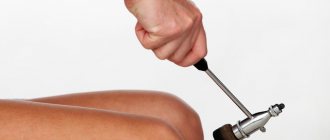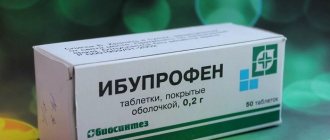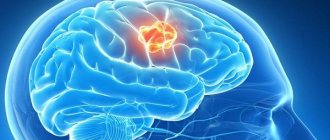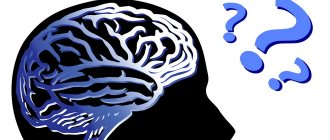Polyneuropathy: brief information
Polyneuropathy is a neurotic disease that affects almost all nerve endings of the peripheral system. Various factors can provoke its development - injuries, carpal tunnel syndrome, impaired metabolism, deficiency of B vitamins.
The disease has 3 forms of development:
- acute - the first signs appear within 2-3 days;
- subacute - more than a month passes from the onset of damage to the peripheral system to the appearance of primary symptoms;
- chronic - develops over years, characterized by frequent alternation of periods of exacerbation and remission.
In men and women, polyneuropathy of the lower extremities is diagnosed equally. This disease is also often detected in children. The reason for this in most cases is heredity, cerebral palsy, and pathologies of the endocrine system.
Treatment of polyneuropathy of the lower extremities requires complex therapy. It includes taking special medications that restore the integrity and functionality of nerve fibers, physiotherapeutic procedures, therapeutic exercises, and massage.
How to treat polyneuropathy
A disease such as polyneuropathy must be treated comprehensively, and a number of measures must be combined. But before treating a patient with polyneuropathy, you need to understand and understand what causes preceded the appearance of such a disease.
There are different reasons. This includes the impact on the body of toxic substances such as mercury, lead and arsenic. This includes food poisoning. Past infections of various types. Diseased organs - liver, pancreas and kidneys - can also provoke it.
Treatment of polyneuropathy is carried out by:
- Medicines to improve the conduction of nerve impulses;
- Vitamins;
- Antidepressants;
- Analgesics;
- Anticonvulsants;
- Hormonal drugs.
The choice of medication for treatment always depends only on the cause of the disease.
Polyneuropathy can also occur due to endocrine diseases, vitamin deficiencies, autoimmune diseases and tumors.
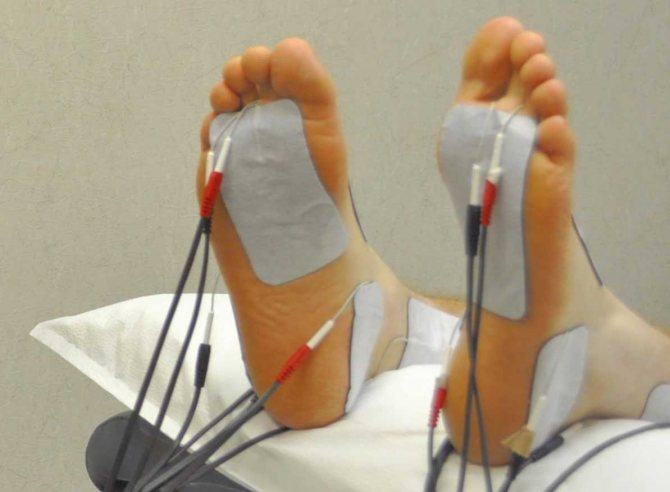
Along with this, drug treatment should be combined with non-drug treatment, the choice of which is also based on the causes of polyneuropathy.
Causes
Various factors contribute to the development of polyneuropathy of the lower extremities. Among them are:
- alcohol, medication, chemical, food poisoning;
- pathologies accompanied by metabolic disorders;
- infectious and viral diseases (diphtheria, botulism, tuberculosis, syphilis, HIV, herpes, HPV);
- systemic diseases (lupus, rheumatoid arthritis, sarcoidosis);
- allergic reactions;
- oncology;
- autoimmune diseases (Guillain-Barré syndrome);
- hereditary predisposition;
- intramuscular, subcutaneous, intravenous administration of serums and vaccines (in this case, polyneuropathy acts as a response of the body);
- acute deficiency of B vitamins;
- endocrine pathologies;
- chronic alcoholism, drug addiction;
- hard physical labor, intense training;
- injuries (bruises, sprains, fractures, dislocations).
Polyneuropathy can also develop against the background of age-related changes in the body, which are characterized by a decrease in collagen synthesis, worsening blood circulation, and a slowdown in metabolism. During such processes, the nutrition of nerve fibers is disrupted, which leads to their damage.
Sometimes polyneuropathy of the lower extremities develops in completely healthy women during pregnancy. There are several reasons for this:
- lack of B vitamins;
- inadequate reaction of the body to the fetus;
- strong pressure of the uterus on the vessels and nerve roots;
- long-term toxicosis.
Clinical picture
The rate of development of polyneuropathy of the lower extremities depends on the negative factor affecting the body. For example, in case of poisoning with chemicals, the pathology progresses quickly and its first symptoms appear within a few days. With endocrine, infectious and viral diseases, it can last for years without giving any signals. This course of the disease is dangerous because, despite the absence of symptoms, it still progresses, leading to irreversible consequences.
First signs
With the development of polyneuropathy of the lower extremities, unpleasant symptoms first appear in the feet, then gradually spread upward towards the buttocks. Its primary signs are:
- burning;
- tingling;
- numbness;
- a feeling of “goosebumps” running across the skin.
In the area where the nerve endings are affected, sensitivity is impaired - it can either decrease or increase. Then painful sensations appear, which intensify as the pathology progresses and are not relieved by anesthetics.
External changes in the legs are also noted. Cracks and ulcers appear on their surface, which do not heal for a long time, which is caused by impaired blood circulation and tissue nutrition. For the same reason, peeling, age spots, and a feeling of coldness appear in the lower extremities. In some patients, polyneuropathy is accompanied by restless legs syndrome, which manifests itself in the form of a burning sensation in the feet, aching calves and joints.
Otherwise, the primary clinical picture depends on the type of disease and the factor that provoked it. For example, toxic polyneuropathy develops within a few days from the moment of poisoning with arsenic, mercury, lead, ethyl alcohol or another substance. And its first symptoms appear in the form of impaired motor activity and a sharp decrease in sensitivity.
In inflammatory neuropathy (resulting from severe inflammatory pathologies), the primary symptoms include:
- discomfort and numbness of the legs;
- speech disorder;
- problems with swallowing food and drinks.
Allergic polyneuropathy is characterized by the following symptoms:
- general signs of an allergic reaction (dry cough, swelling, skin rash);
- decreased sensitivity;
- reflex disorder.
The traumatic type of pathology occurs several weeks after injury and manifests itself in the form of impaired motor functions. When the cause of the development of polyneuropathy is cancer, its primary symptoms most often appear a few days after chemotherapy. They are expressed in the form:
- sensitivity disorders;
- movement disorders;
- decreased muscle tone;
- motor dysfunction;
- signs of disorders of the autonomic and nervous systems.
General symptoms
Polyneuropathy of the lower extremities manifests itself in different ways. It all depends on the type of disease (sensory, motor, vegetative, mixed). But there are symptoms that appear in 90% of cases of damage to the peripheral system. These include:
- muscle weakness;
- coordination problems;
- deterioration of reflexes (in some cases they are completely absent);
- sensory disorders;
- burning sensation, numbness, “pins and needles”;
- increased sweating, hot flashes;
- increased heart rate;
- tremor of the limbs;
- swelling of the legs;
- pale skin;
- cracks, ulcers.
Another common symptom is pain and weakness in the legs. A person loses working capacity because his lower limbs cannot support his body weight.
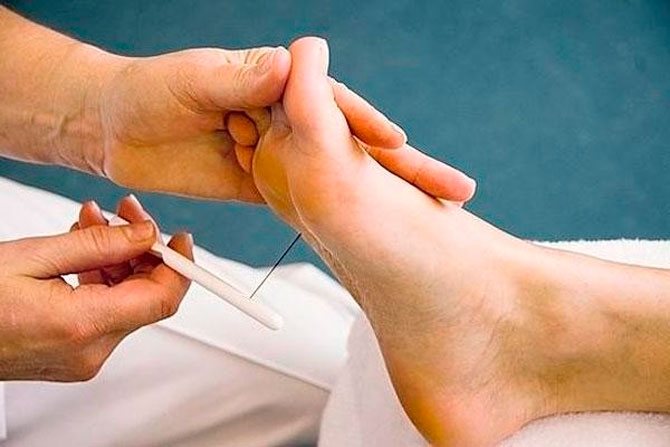
How to improve blood circulation with neuropathy?
If exercise therapy for neuropathy for the hands or other parts of the body is not effective enough, therapeutic massages should be added to the exercises. This therapy affects soft tissues using special electrical devices or manually. Sunbathing, special oils, as well as simultaneous trips to the bathhouse or sauna are often used here.
The specialist who performs the massage performs smooth movements, causing minimal impact on the patient's skin. Strokes should be directed from the periphery to the central part.
It is also worth considering some caveats, namely:
- since the patient suffers from loss of sensation, the specialist must be careful when applying pressure to the affected parts of the body;
- it is necessary to carefully check the skin, as there is a high risk of injury after a massage;
- If pain occurs during the massage, you should stop immediately and consult a doctor as soon as possible.
Only a highly qualified specialist should engage in such therapy, only in this case the intensity of the symptoms will decrease and the patient will feel a general improvement in his condition. If massage is performed incorrectly, the patient may experience problems with swelling, arthritis, or infections.
For massage to be as effective as possible, the following rules must be followed at home:
- Selection of a place convenient for the patient.
- Monitor your feelings while constantly maintaining a conversation.
- Do not massage in a hurry.
- Use only moderate pressure and smooth movements.
- Before the procedure, you need to prepare special oil, pillows, a blanket and a towel.
- The massage therapist should also take a comfortable position in relation to the patient - standing or sitting.
Signs of sensory polyneuropathy
This type of pathology has one peculiarity - it develops slowly, gradually affecting one nerve fiber after another. Therefore, in the initial stages, sensory polyneuropathy is asymptomatic.
The first signs of the disease appear 1-2 years after damage to the peripheral system. Manifestations of the disease can be positive and negative. The first include:
- increased perception of pain;
- a strong burning sensation in the legs;
- paresthesia;
- hypersensitivity to tactile stimuli;
- sharp pain that prevents movement.
Negative signs of sensory polyneuropathy manifest themselves in the form of decreased sensitivity in the extremities and lower abdomen. Movement disorders, severe weakness, convulsions, and uncontrollable muscle twitching are also observed.
At first, sensory polyneuropathy affects only the lower extremities. But if left untreated, the disease begins to spread throughout the body, affecting:
- hands;
- chest;
- neck;
- pharynx;
- head muscles.
This causes difficulties with swallowing food, speech defects, hand tremors, breathing problems, etc. At the same time, the pain syndrome spreads, gradually covering the entire human body.
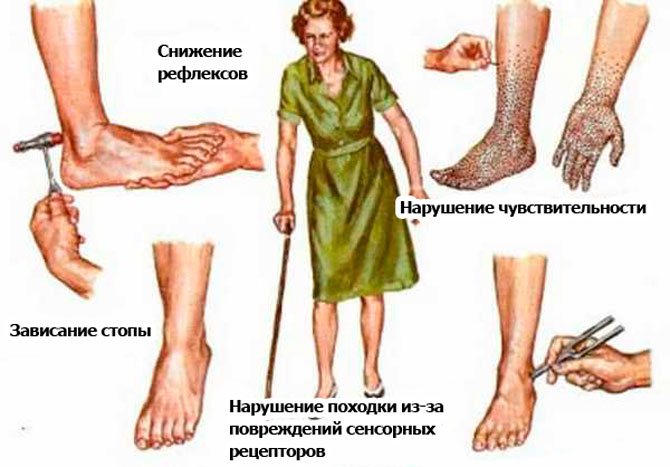
In most cases, sensory polyneuropathy takes years to develop. But there are situations when it occurs suddenly - in just a couple of weeks. Moreover, the clinical picture of the disease directly depends on which nerve fibers were damaged.
If sensory polyneuropathy affects large peripheral nerves, there is a decrease in sensitivity to light touch. When examining the patient, a decrease in deep muscle tone and an unstable ataxic gait are revealed.
When small peripheral nerves are damaged, a decrease in body temperature and pain sensitivity is observed. In other words, a person does not feel pain, which increases the level of injury.
Diagnosis of diabetic polyneuropathy.
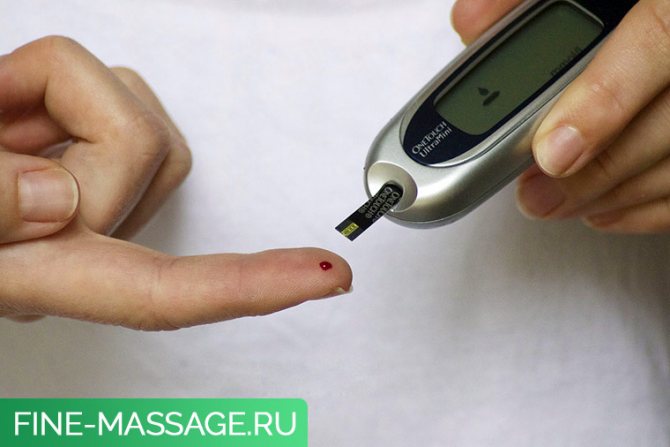
The patient is examined by a doctor, collects complaints, and other causes of polyneuropathy are excluded: alcoholism (alcoholic polyneuropathy), tumors and infections of the nervous system, intoxication.
Additionally carried out:
- Checking vibration sensitivity with a tuning fork, temperature sensitivity with water of different temperatures;
- Checking the knee and Achilles reflexes of the lower extremities;
- Electromyography – measurement of muscle potential and contractility;
- Sensory computer testing for diabetic polyneuropathy.
Signs of motor polyneuropathy
The pathology develops rapidly. Its main symptom is muscle weakness, which spreads from bottom to top, gradually affecting the entire limb. Initially, the disease manifests itself as the inability to remain on one’s feet for a long time. There is rapid fatigue, which is why a person is constantly looking for a place to sit.
As motor polyneuropathy progresses, muscle weakness increases, which negatively affects motor function. Climbing stairs becomes a real problem for the patient, as it becomes difficult for him to bend and raise his legs more than 5 cm from the floor level. And if at this stage of the development of the disease a person does not receive the necessary treatment, muscle atrophy is noted, which leads to complete immobility of the limbs. In other words, he becomes disabled.
Due to the fact that the legs are immobilized, blood circulation in them is disrupted, as a result of which the tissues begin to experience an acute deficiency in nutrition. This causes a deterioration in local metabolism and regeneration, which leads to the formation of ulcers and cracks in the skin that do not heal for a long time. Also, poor circulation leads to pale skin, peeling and muscle spasms, which is manifested by frequent cramps.
Faith is weakening. TERRIBLE DIAGNOSIS OF POLYNEUROPATHY.
Another very difficult week has passed. I practically don't sleep.
We wanted to go to Cheboksary on the fifth day to a paid hospital to recover, but we didn’t have time.
FERALE 13 A FINGER ON YOUR HAND STARTED TO TURN,
FEBRUARY 19 FIRST ATTACK IN ARZAMAS,
FEBRUARY 20 COMPLETE PARALYSIS OF THE RIGHT HALF
FROM FEBRUARY 20 TO FEBRUARY 29 THE PRIMARY VASCULAR DEPARTMENT WAS TREATED, BETTER, EVEN SHE WENT OUT WITH LEGS, ALTHOUGH ARM DID NOT WORK\
GAVE SICK AWAY FROM MARCH 1 TO MARCH 6.
WE WANTED TO GO TO A PAID CLINIC ON THE FIFTH...
————————
new nightmare.
On the night of March 4th, the attack began again. Heart pounding, pulse 140, blood pressure 150/100,
Sharp pain in the arm and leg, again the limbs and the right half of the body were paralyzed. They called an ambulance. They arrived quickly. They dragged my daughter out on a stretcher, and again we ended up in the hospital, But they didn’t put us in the vascular ward, they just left us, they put us in therapy, on a neurological bed. Like in an express train, FOUR PEOPLE IN THE CORRIDOR, THE LIGHTS DO NOT TURN OFF , YOU PUT THE VESSEL IN VIEW OF EVERYONE.,
On the night from Sunday the 4th to Monday the 5th we were with her in the corridor, I stretched her arms and legs.
Mexidol was dripped, In the morning the doctor came and said that she was probably nervous. THEY TRANSFERED TO A ROOM. IT’S BETTER HERE,
MONDAY THE 5TH AND TUESDAY THE 6TH THE MEXIDOL DRIPPED AND THE PAIN RELIEF KETAROL WAS DONE.
——————
On Wednesday, the 7th, I took her to the hospital for examination in Cheboksary and ended up with a neurologist in the clinic, the doctor from Kanash was not against it, he even said, if they leave her, go to bed, because he didn’t know what to do with us...
We barely got there, I was riding lying down. The study was done at the Republican Clinic for Rehabilitation Treatment, called ENMG study, electroneuromyography. - Electrodes were connected and currents were given.
DIAGNOSIS: inflammatory demyelization, polyneuropathy
A nerve has a sheath, this sheath is destroyed, the disease cannot be treated, the NERVES ATROPHATE...
THE CLINIC gave us a recommendation to do Octolipen in droppers at 600, and hormones in crazy doses.
———————
On the evening of the seventh we arrived back, the doctor prescribed HER Octolipene Drips,
but with hormones I decided to wait until Cheboksary, perhaps they decided that we WILL still TRANSFER TO CHEBOKSARY and leave...
Inspired, we began to drip octolipene, hoping that this medicine would restore the nerve sheath.
but at night there was another attack, my legs and arms were in hellish pain, the right half switched off, and the left arm also began to go numb. rubbed again.....
On the eighth, ninth and tenth, octolipene and Mexidol were also dripped once a day.
———————————————-
On the tenth night, without an attack, (heart and pressure), both legs were paralyzed, completely, like whips,
BUT THIS CONDITION WAS NOT FOR VERY LONG, SHE BEGAN TO KNOCK MY LEGS, MOVE MY HANDS, GIVE IMPULSES TO MY LEGS, AND THEY CAME TO LIFE IN FIVE MINUTES. WE WERE ALIVE, BUT THE FEELING OF FEAR REMAINED THAT THE LOWER PART IS NOT YOURS...
IN THE MORNING I BROUGHT EGORKA TO HER, SHE TOUCHES HIS SKIN AND REALIZES THAT SHE DOESN’T FEEL THE CHILD’S SKIN, NO COLD, NO WARMTH, NO WALL, NO BODY, NO HOT GLASS….
——————————
ON MARCH 11, I WENT UP TO THE FLOOR HIGHER FOR A CONSULTATION WITH A GYNECOLOGIST AND REALIZED THAT MY LEGS HAD FORGOT HOW TO WALK THE STAIRS -
ON THE ELEVENTH OF MARCH, THE DOCTOR CAME, HAVING FEARNED ABOUT THE LEGS THAT WERE NON-LONG, PRESCRIBED HORMONES, THERE IS NO WHERE TO PULL FURTHER,
WE PUT A DROPPER" METYPRED 500 RIGHT IN THE EVENING
THIS IS PREDNISOONE, A HORMONE, 2 AMPOULES DILUTED.
A TERRIBLE NURSE CAME, YELLED AT SASHA FOR CRYING WHEN I ENTERED A NEEDLE INTO A VEIN, AND BEGAN TO SCALE HER FOR BEING A SISSY,
SASHA CRIED......SAYS, AND SO THE DIAGNOSIS IS SCARY, EVERYONE IS ON NERVES, AND YOU ARE STILL INCREASING THERE. VOICE…
THE NURSE GOT THE DRIPPER VERY QUICKLY, PROBABLY OUT OF ANGER.
BUT A TERRIBLE HAPPENED, THE DRIPPER ——DID NOT GO, ——SORE THROAT, NAUSEA, VOMITING,, THE BODY STARTED TO SHAKE...
THE DROPPER WAS REMOVED, I DEMANDED TO CALL THE DOCTOR ON DUTY,
THE NURSE WAS SCARED
,THE YOUNG DOCTOR CAME,
THEY COVERED UP WITH PILLOWS AND A HEATING BATH, GAVE AN ANTIEMETITIC INJECTION, THE HEART WAS FANTASTIC AGAIN - PULSE 110, (ANAPRILINE UNDER THE LANGUAGE. WE GAVE OURS - WE RECOMMENDED FOR ATTACKS IN CHEBOKSARY)….
I NEARLY LOST HER, PALE, CAN’T SPEAK, CAN’T BREATHE... I CALLED HER HUSBAND ON THE PHONE, I SAY THAT I NEARLY DIED, COME
I DIDN’T GO HOME, I STAYED AGAIN THE NIGHT WITH HER, I GOT A MASSAGE AGAIN - I’LL PROBABLY SOON WILL BECOME A PROFESSIONAL MASSAGE THER MYSELF, IN THESE THREE WEEKS.
IN PSO THERE THE MASSEUSE CAME TO EVERYONE, BUT NOT HERE...
I ORDERED ANOTHER GRANDMOTHER TO TAKE THE CHILDREN FROM US, SINCE I HAVEN'T WORKED FOR THREE WEEKS, I ONLY WENT TO WORK ON MARCH 11, AND I HAVE TO WORK IN THE MORNING OF 12....
THE NIGHT WAS NOT BAD, I WAS STILL THOUGHT HOW TO TRANSPORT HER TO CHEBOKSARY, BUT THEY ALSO PLANNED THIS METYPRED THERE... AND SINCE IT DOESN’T WORK, WHAT ELSE CAN BE DONE, I DON’T KNOW, I’M NOT A DOCTOR.
—————————————————————————————————
ON THE 11TH OF MARCH THE DAY SHIFT CAME, SASHA STRONGLY ASKED TO TRY THE MEDICINE AGAIN, BUT TO ADMINISTER SLOWLY,
YOU WANT TO BE TREATED FOR EMOTIONS, JUST FAKES,
AT FIRST IT WAS NORMAL, BUT BY THE END IT WAS VERY PAINFUL IN THE THROAT AGAIN AND THEY DECIDED TO REMOVE THE DROPPER FOR FEAR OF SHOCK AGAIN.
—AFTER LUNCH THE DOCTOR CAME AND SAID THAT THIS MEDICATION CAN’T BE DONE ANYMORE, BECAUSE IT TURNS OUT THAT A TYPE OF ALLERGY CAN SIMPLY DIE DURING A DRIPPING,
..
ON THE AFTERNOON OF MARCH 12, THEY DID AN ULTRASOUND OF THE HEART, TOOK A LOT OF DIFFERENT BLOOD TESTS FOR POTASSIUM, MAGNESIUM, RHEUMATIC TEST, .. THE DAY PASSED.... WHAT WILL HAPPEN TOMORROW, I DON’T KNOW,
——————————————————————————
I WRITE WITHOUT EMOTIONS, NO STRENGTH. MOM IS ALSO IN TROUBLE, SHE IS NERVOUSLY AFTER SASHA ALSO WENT TO THE HOSPITAL ON THE 6TH WITH AN EXacERBATION OF CHRONIC PANCREATITIS. I CALLED AN AMBULANCE AND SENT HER, ASSURED THAT WE NEED HER HEALTHY AND ALIVE, AND WE WILL CAN DO WITHOUT HER, WITH THE CHILDREN MI, AND SHE IS SEVERAL THE DAYS WILL GO AND YOU WILL RETURN HEALTHY.....
, SHE HAD 5 DAYS, IT BECAME BETTER, I WAS TORN BETWEEN THEM, THEN MOM, WHEN IT FEELED A LITTLE, BEGAN TO GO DOWN TO US TO THE 2nd FLOOR, AND SHE TO THE 3rd FLOOR
WE WANTED TO GET HER OUT TODAY, BUT TODAY THEY DID A STUDY - FGDS, SWALLOWED A BULB AND FOUND A BLEEDING POLYP IN THE STOMACH, NOW THE DAY AFTER TOMORROW THEY WILL DO AN OPERATION ON HER, FROM THE SAME PROBE WILL PIN OFF THIS POLYP AND THE BAY TAKE MEDICINES.
I BOUGHT ANOTHER NIGHTGIE FOR MOM, ANOTHER SLIPPERS FOR MOM, A SECOND PJAMAS FOR SASHA, TIGHTS...
————————-
MY SON-IN-LAW ARRIVED URGENTLY TODAY, AND LEFT YESTERDAY, HAVING FOUND OUT THAT SASHA WAS BAD FROM THE DRIPPER..
..DURING SASHA'S ILLNESS, HE COME FOR THE SECOND TIME,
AT LEAST IT WOULD BE EASIER FOR ME WITH THE CHILDREN, I WENT TO WORK FOR THE SECOND DAY TODAY.
I WENT HOME TO BED TONIGHT.
AT FIRST, IT LOOK LIKE MOM STAYED WITH SASHA, BUT SHE RUSHED HER A LITTLE BIT AND FROM THE STRESS, HER HEART THUMBED.
—————AND MY HUSBAND IS WORRIED, M-SILENT, TELLS ME TO GET SLEEP,
FIRST DAY HOME IN A WEEK, I AM TODAY.
I DON'T COOK
I PRACTICALLY DO NOT LIVE LIKE I DO AN AUTOMATIC MAN.
———————-
I DON’T UNDERSTAND WHY…..WHY IS SASHA SUCH TORMENT.
————————-
AND SHE SUPPORTS ME, SAYS, WELL, THERE ARE HANDS, LEGS, AND THEY SAY THE NERVE CELLS ARE RESTORED…..
I BEFORE THOUGHT THERE WOULD BE MONEY, WE WOULD DO ALL THE RESEARCH AND WILL BE CURED, BUT I WAS NOT PREPARED FOR SUCH A DIAGNOSIS.
SASHA SAYS, IT’S OKAY TO HAVE A SINGLE STROKE AND THAT’S ALL, THEN YOU RECOVER, BUT HERE WITH EVERY DAY THE DISEASE GETS INCREASED, THEN GOES AWAY,
MAYBE ANOTHER SAINTS I SHOULD PRAY......THE FAITH IS WEAKENING, FOR WHAT..... MAYBE SOME WIZARD CALLED, MAYBE A DAMAGE, I THINK, I UNDERSTAND THAT IT IS IMPOSSIBLE, BUT HOW DO I COME TO FUCK WITH THIS....
Now it’s not even a stroke, but an inflammation of the sheath of nerve fibers, and the arms and legs stop working, then they seem to turn on, but they stop feeling both themselves and objects, a weak arm and leg.
Either he walks little by little, then he cannot get up, he falls off, as if impulses are falling out. and reappear
Everything goes numb, especially at night. .
now - inflammatory demineralizing neuropathy and vegetative-vascular crisis are diagnosed
Thanks to everyone, we did the examination after all, we went to Cheboksary twice.
based on the results of numerous examinations, which I nevertheless did. at least you know what needs to be treated
There was a stroke from the very beginning, but now the nerves have been affected.....
I buy everything that is prescribed, but so far there is very little use.
Either the medicine is not suitable, then they do other studies, but everything is the same....
I updated my diary, wrote it down for the whole week so as not to forget, I hope...
I think about this myself, and I understand that this probably doesn’t happen in life, Well, why did this happen, how can I scroll this month in the opposite direction, and prevent this grief….
Signs of sensorimotor polyneuropathy
This type of pathology includes symptoms of sensory and motor polyneuropathy. When it develops, sensory disturbances and muscle weakness are simultaneously observed. Initially, signs of the disease appear in the feet. They manifest themselves in the form of burning, numbness, tingling, and a sensation of “goosebumps.” After which the unpleasant symptoms begin to spread upward, and muscle weakness occurs.
The following is a standard clinical picture:
- performance decreases;
- motor functions are impaired;
- muscles atrophy;
- Ulcers and cracks appear.
Signs of autonomic polyneuropathy
With the development of this form of pathology, damage occurs to pre- or postganglionic neurons of sensory and motor fibers. It manifests itself mainly as signs of loss of autonomic regulation:
- orthostatic hypotension up to fainting;
- dry skin;
- hypothermia;
- atony of the bladder;
- bowel dysfunction (constipation);
- dry mouth;
- decreased tear production;
- accommodation;
- impotence.
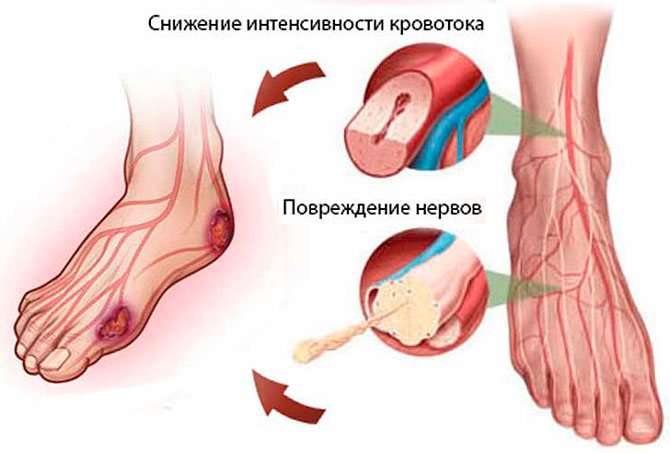
In some cases, autonomic polyneuropathy is manifested by symptoms of irritation, which include:
- bradycardia or tachycardia;
- diarrhea;
- increased sweating;
- arterial hypertension.
The danger of autonomic polyneuropathy is that when it develops, a person can suddenly die from cardiac arrest. The reason for this is arrhythmia and disruption of the ventricles. This disease is classified as cardiac type.

